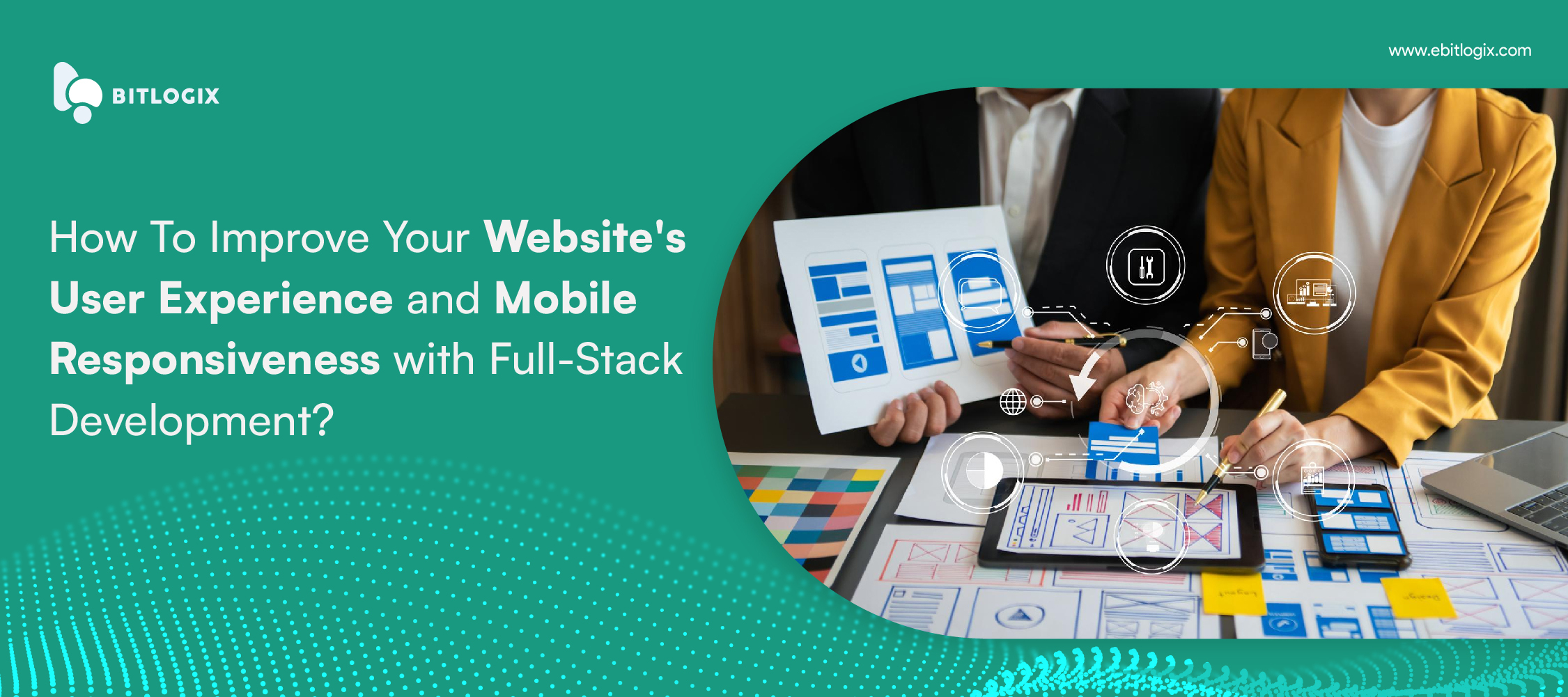
The world is crowded, with over 1.5 billion websites to date. A web with effective user experience and mobile responsiveness is where your brand can stand out to grab more opportunities in the market and stand out from the competition. In 2024, the digital universe houses about 1.09 billion websites. Every passing day witness the addition of 252,000 new sites, adding to the diverse and ever-growing online world. With modernization in technology, the active online presence of businesses is seeking more growth opportunities. In this regard, a responsive website is mandatory that provides a comprehensive and effective user experience to the visitors and brings more traffic to the website. Thus, a website, creating seamless user experiences is key to success. It’s not enough for a web application to merely function; it must provide an effective user experience, ensure intuitive navigation, and deliver a cohesive experience across all interactions. This is where the art of full-stack web application development comes into play. In this blog, we will explore how you can improve your website’s user experience and mobile responsiveness with full-stack development.
Explore In Numbers: Understanding the Resources of Traffic:
The mobile e-commerce market is booming. Mobile commerce sales were expected to reach $604.5 billion in 2024, showcasing significant growth from previous years. This number is expected to climb even higher in the coming years. Experts predict mobile commerce will account for an even bigger share of total e-commerce sales in the future. Estimates suggest it could reach 62% of all retail sales by 2027.
The dominance of mobile continues to grow. In late 2023, smartphones accounted for nearly 80 percent of all retail website visits worldwide. This means desktops and tablets combined make up only 20% of traffic. According to the reports of Search Engine journals, Studies show mobile-friendly websites can see a decrease in bounce rates by up to 40%. According to Statista reports, In North America, 45% of web traffic comes from mobile devices.
Enhancing User Experience (UX) with Full-Stack Development:
Seamless Navigation:
Using full-stack development solutions, developers craft user interfaces that are perfect for different screen sizes. They craft an interface that presents an intuitive menu, adjusts according to the different screen sizes, shows clear buttons, and easy-to-read text according to their screen size.
Faster Load Times:
According to Forbes reports, 40% of users will leave a site if takes more than three seconds to load. It is reported that 40% of users do not want to pursue further if it takes them more than 30 seconds to load a website. Full stack solutions deal in optimizing both front end and back end of a website. On the front end, developers use efficient coding practices, minification, media optimization, reduce file sizes, and prevent render-blocking. On the back end, they ensure efficient database queries, server-side caching, load balancing, and optimized server configurations. Moreover, developers monitor website performance, and with time they progress web apps, pipelines, and scale architecture to improve overall website performance.
Adopting this approach really helps a website to optimize its performance, which results in faster load time of the website.
Personalized Experiences:
By integrating back-end data with the front-end, full-stack developers personalize user experiences. Its example can be referred to as product recommendations based on the past purchases of a customer, which make a more engaging browsing experience for the customer.
Seamless integration:
In creating a seamless user experience, the power of integration plays a pivotal role. Full stack development makes various components work effectively to ensure better functionality and usability of the website. To make a website look good and function well, full-stack developers merge the visual aspects of the front end with the backend data management.
Mobile Responsiveness with Full-Stack Development:
In order to maximize the reach of a website, the app must be mobile-responsive and can attract a large number of people. According to reports, Mobile commerce sales were expected to reach $604.5 billion in 2024, indicating immense growth from previous years. This number is even predicted to reach new heights and make new records.
Responsive Design:
Full stack development offers responsive design frameworks that enable a website to adjust the layout according to different screen sizes, such as desktops, tablets, and mobiles.
Mobile-First Approach:
During the development process, this approach is adopted from the beginning ensuring a smooth user experience for the mobile users from the very beginning.
Touch-Friendly Interactions:
With full-stack solutions, developers can add touch-optimized features such as large buttons and swipe gestures that ease the navigation process.
Final Thoughts:
In this mobile-driven world, a website that lacks effective user experience and is not mobile-responsive will struggle and miss a lot of growth and success opportunities. To find solutions of all these problems, Full-stack development is a solution, crafting websites that excel in both user experience and mobile responsiveness. Don’t get left behind. Partner with BITLogix, a full-stack development company that can transform your website into a mobile-friendly masterpiece that drives user engagement and business growth. Contact us today and improve your online presence.